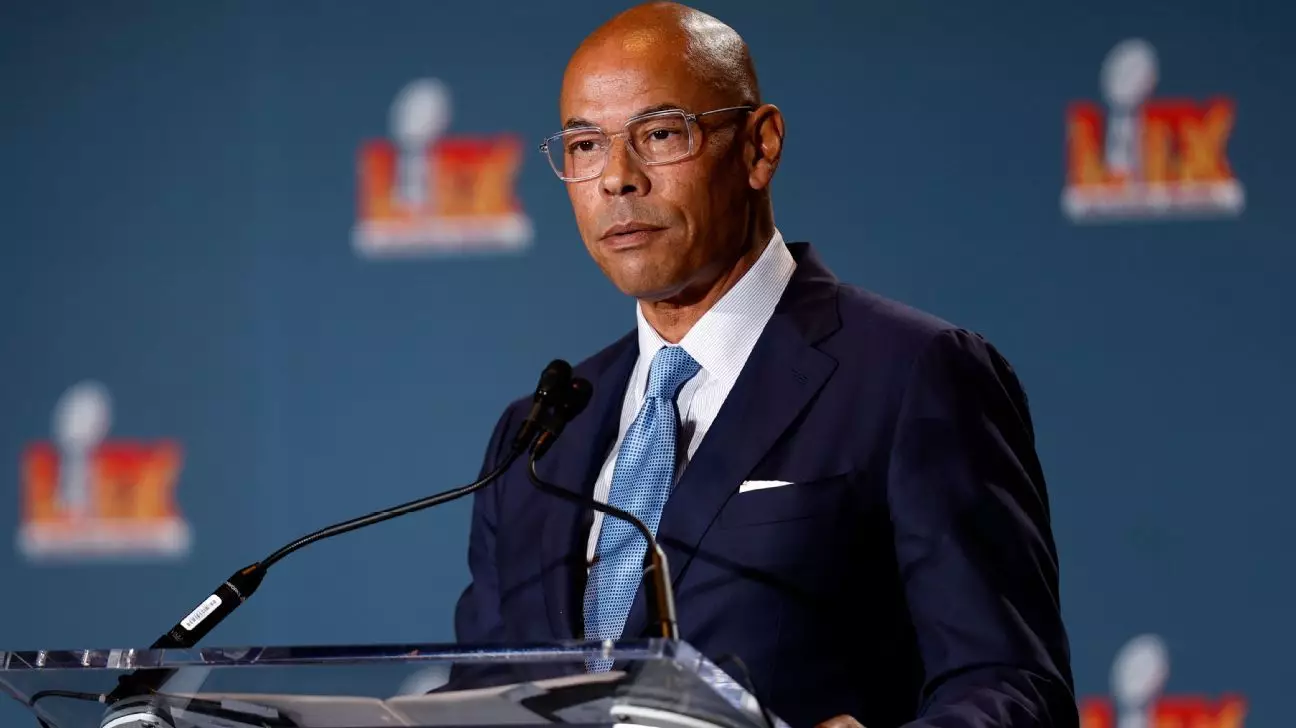The recent upheaval within the NFL Players Association (NFLPA) reveals a complex web of loyalty, accountability, and strategic caution. Central to this storm is the support for Executive Director Lloyd Howell Jr., which the organization’s leadership publicly affirms amid reports of internal conflicts and external scrutiny. The NFLPA’s leadership is attempting to project stability and unity, yet cracks are beginning to show beneath the surface. This tension exposes the challenge of balancing transparency with political caution within a union that is historically a battleground for power dynamics and representation.
What strikes as most revealing in this episode is the NFLPA’s vehement denial of any calls for Howell’s resignation, emphasizing their process and commitment to fair assessment. While the organization asserts it’s safeguarding Howell’s reputation and their collective mission, the underlying issues—particularly around conflicts of interest and the opaque handling of sensitive information—indicate deeper structural vulnerabilities. The union appears caught in a dilemma: protect their leadership to maintain unity or confront uncomfortable truths that could fracture the very fabric of their collective bargaining power. It’s an internal crisis rooted as much in personal loyalty as in organizational integrity.
Conflicts of Interest and the Battle for Public Trust
The controversy over Howell’s concurrent role as a paid, part-time consultant for Carlyle Group adds a significant layer of suspicion. The Carlyle Group, known for its private equity influence, is noteworthy not just because of its business dealings, but because of its ambitions to stake a minority claim in NFL franchises. The union’s concern appears rooted in a potential conflict of interest—an executive serving two masters, so to speak—raising questions about whether Howell’s personal financial interests may influence his leadership or decision-making.
The refusal of Howell to step away from Carlyle, despite admonitions from union lawyers, signals a stubbornness or a misjudgment in weighing the union’s broader interests. It demonstrates a potential disconnect between leadership and the rank-and-file players, who might view such dual roles as compromising the integrity of their representation. If union officials cannot be trusted to navigate conflicts transparently, the entire union’s credibility diminishes, risking widespread disillusionment among players already wary of league negotiations and labor disputes.
This controversy also underscores a deeper issue within union politics: the delicate balance of power between leadership and membership. Howell’s situation raises fundamental questions about transparency and accountability, especially when union leaders navigate potentially conflicting interests involving private equity firms embedded in the league’s ecosystem. Such conflicts threaten to undermine the union’s bargaining power and, ultimately, the players’ trust in their representatives.
Secrecy, Confidentiality, and Player Rights
One of the most troubling revelations involves the confidentiality agreement associated with the arbitration decision from January 14. The fact that details—particularly findings suggesting league executives attempted to influence player compensation—were concealed from players until an external podcast exposed them is indicative of an entrenched culture of secrecy. Such opacity is antithetical to the principles of transparency necessary in a union that claims to advocate for players’ rights.
The union’s decision to seek an appeal of the arbitration ruling reveals a defensive posture—an effort to push back against what they perceive as an unjust or incomplete process. However, this move also hints at internal disagreements about how best to represent players’ interests. Is the union truly committed to uncovering and addressing systemic issues, or is it more focused on protecting its leadership from controversy? The hiring of outside legal counsel like Ronald C. Machen further indicates a desire to scrutinize internal activities, but it also hints at underlying anxieties about accountability.
The secrecy surrounding the arbitration and the subsequent appeal process could alienate some players. Trust is crucial in labor representation, and opaque decision-making risks alienating those who feel the union is more interested in protecting itself than fighting for their rights. Transparency, in this case, isn’t just a virtue—it’s a strategic necessity if the union aims to genuinely serve its members.
A Union at a Crossroads
The NFLPA’s current turmoil reflects a broader challenge faced by labor organizations in high-stakes environments. Leadership must navigate complex relationships with powerful league entities, private interests, and their own members. The situation with Howell exemplifies how internal conflicts, if left unaddressed, can escalate into credibility crises that weaken the union’s ability to negotiate and advocate effectively.
The union’s decision to publicly affirm Howell’s support appears as an effort to maintain stability amid chaos. Yet, such statements risk superficiality if underlying issues remain unexamined. The true test for the NFLPA lies ahead: will they embrace transparency and reform, or will they continue to prioritize internal loyalty over genuine accountability?
For the players—those whose futures and livelihoods hang in the balance—trust in their union is paramount. If the NFLPA is to emerge stronger from this storm, it must confront its internal demons head-on, foster an environment of openness, and demonstrate that the union’s integrity is non-negotiable. Only then can it truly serve as a guardian of players’ rights and a force capable of meaningful change within the league’s complex power structure.

